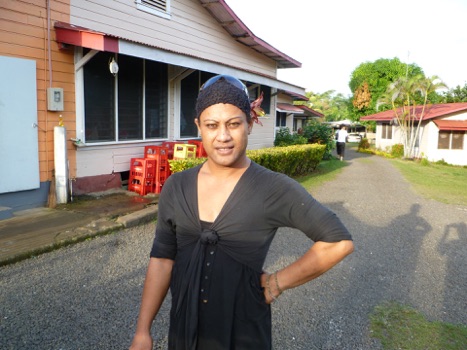Gender Atypicality, Identity, and Distress
Gender Identity Disorder (GID) is a condition that is currently considered to be a mental disorder in most Western cultures. It is characterized by an intense desire to be the other sex or to act in the gender role more culturally appropriate for the other sex. GIDC is included in the American Psychiatric Association’s (APA) Diagnostic and Statistical Manual of Mental Disorders, 4th Edition, Text Revision (DSM-IV-TR).
The DSM-IV-TR criteria for mental disorder require that a condition is associated with distress. Moreover, it must not simply represent a behaviour that conflicts with societal norms. Fa'afafine live in a society that is relatively accepting of feminine males. As such, if fa'afafine experience distress at all in relationship to the cross-gender behaviour, cross-gender identity and cross-sex wishes it is less likely to be the result of societal discrimination, as would be the case in Western cultures.
The fa’afafine we interviewed did not recall distress as a direct result of their cross-gender behaviors and cross-gender identities. Rather, they often cited these behaviors and feelings as the sources of intense personal joy. These results suggest that distress is not caused by cross-gender behavior and identity, but rather exists as a secondary product of social condemnation. Based on this cross-cultural information, we conclude that the diagnostic category of GIDC should not occur in its current form in future editions of the DSM as there is no compelling evidence that cross-gender behaviors or identities, in and of themselves, cause distress in the individual.
Further Reading:
Vasey, P.L. & Bartlett, N.H. (2007). What can the Samoan fa’afafine teach us about the Western concept of “Gender Identity Disorder in Childhood”? Perspectives in Biology and Medicine, 50: 481-490.


